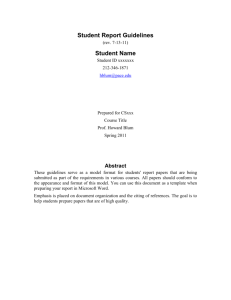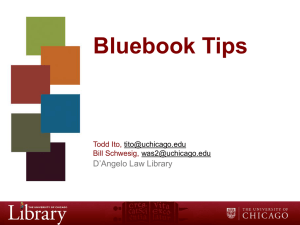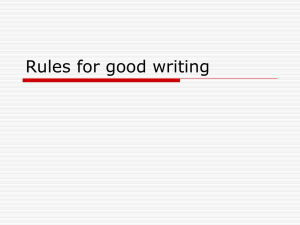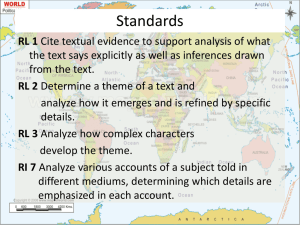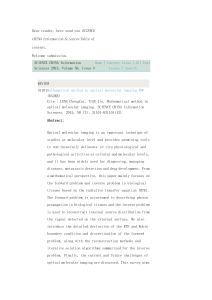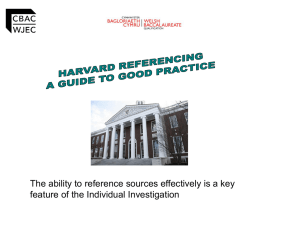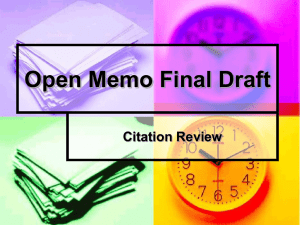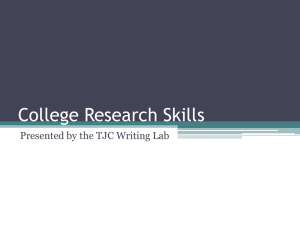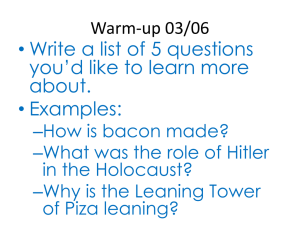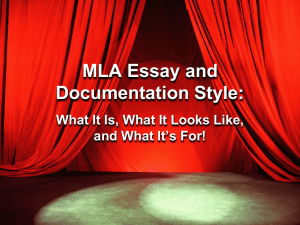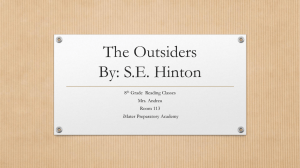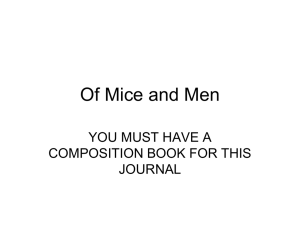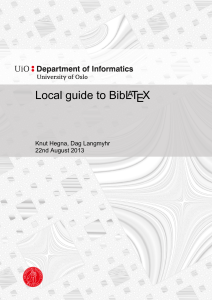ALWD Third Edition Intro L Rev Updated
advertisement
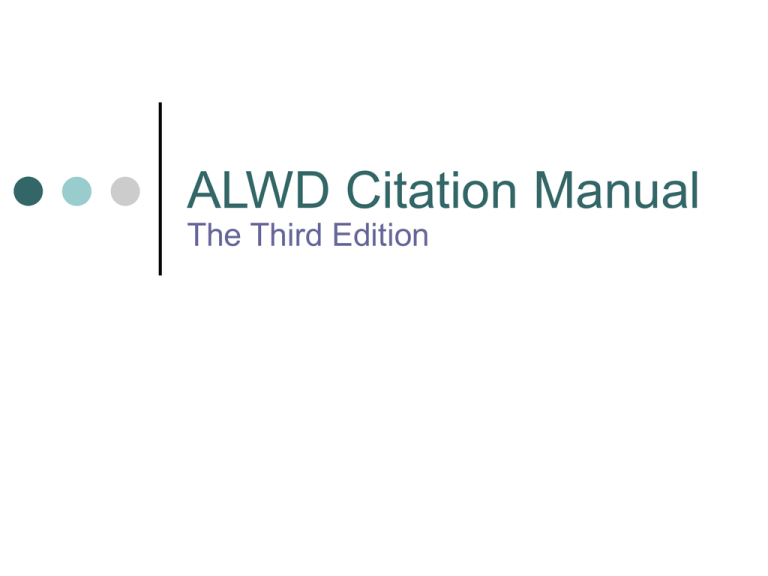
ALWD Citation Manual The Third Edition Philosophy Not change for the sake of change Goal to refine and clarify the rules Goal to respond to users’ inquires Returning Features Fast formats Sidebars Diagramed examples More examples Detailed index Local court rules Two-color design Web site for updates Notable Additions Capitalization of prepositions and titles in French, German, and Spanish. Guidance on citing to both a page number and a footnote or endnote number. Expanded coverage of basic international, foreign, and intergovernmental sources. Updated examples. Many clarifications and explanations. Rule 1: Typeface Additions added to rule 1.1 and in Sidebar 23.2 about how to use large and small capital letters as a typeface, when submitting material to law reviews or book publishers that require that type face. Rule 2: Abbreviations Rule 2.3 permits the abbreviation U.S. in textual sentences, in addition to the abbreviations &, Assn., Bros., Co., Corp., Inc., Ltd., and No. Rule 3: Capitalization New Sidebar 3.1 provides a list of prepositions commonly used in titles. New Rule 3.4 address capitalization rules for titles in French, German, and Spanish. Rule 6: Sections & Paragraphs Provides guidance when citing both a page number and a section and/or paragraph number. Rule 7 – When the Pinpoint Includes a Footnote/Endnote Provides guidance on how to cite to both the page number and footnote or endnote numbers. Contains a new rule regarding how to cite to footnotes/endnotes when using Id. Harold J. Berman, The Historical Foundations of Law, 54 Emory L.J. 13, 16 nn. 2–5 (2005). Id. at 16 n. 4. Rule 8: Supplements Provides guidance on how to cite to material that appears in multiple supplements. For example: Citing multiple supplements, different years: 17 U.S.C. § 512 (Supps. IV 1999 & V 2000). Citing multiple supplements, same year: 17 U.S.C. § 512(d)(1)–(3) (Supps. IV & V 1994). Rule 11: Short Citations Clarification of the use of the term “at” in short citations. Use “at” before the pinpoint page, section, paragraph, or other division. Id. at 564. Id. at § 1.55. Id. at ¶ 8. Id. at tbl. 2.5. Rule 12 – Cases Provides guidance for citing bankruptcy cases. New subsections added to Rule 12.2: Rule 12.2(r): how to cite to a case or group of cases that has become well known by a popular name. Rule 12.2(s): how to cite cases with multiple decisions Rule 12.4 has been rewritten to provide further clarification. Rule 14: Statutes In order to reflect common practice by practicing attorneys, if the citation of a statute includes the statute title, the title should appear in ordinary type. Sidebar 14.2 now indicates that the abbreviation U.S.C. may be used when referring to a statute in a textual sentence. Rule 19: Federal Regulations and Patents Rule 19.1(d) provides guidance on how to cite to C.F.R. sections that appear in electronic databases. New rule – 19.13 – shows how to cite to patents. Rule 21: International Sources Expanded rule that includes fundamental information about citing to basic international, foreign, and intergovernmental sources. Rule 22: Books Subsections added to show the following: Rule 22.1(i)(4): how to cite to more than one publisher. Rule 22.1(n): how to cite to the Koran and the Talmud. Rule 22.1(o): how to cite to books in a foreign language. Rules 23: Periodicals Provides further guidance about the placement of the comma when the article title ends with quotation marks. After the complete title, typically insert a comma and one space, and the comma is not italicized. For example: • Neil Gotanda, A Critique of “Our Constitution Is Color-Blind” , 44 Stan. L. Rev. 1 (1991). New sections have been added to show the following: Rule 23.1(j): how to cite to a letter to the editor. Rule 23.1(k): how to cite to a cartoon or comic strip. Rule 23.1(l): how to cite to an advertisement. Rule 37: Working Papers Rule 37.3 has been added to show how to cite working papers, including material that appears on SSRN. Rule 40: Blogs Rule 40.3 has been added to show how to cite to weblogs. Rule 44: Explanatory Parentheticals Clarification added to Rules 44.4 and 46.1 to explain that explanatory parentheticals should be used to assist the reader, not to be included any time that a signal is used. Rule 45: Order of Authorities Foreign, international, and intergovernmental organization sources have been added to the specific order of authorities in Rule 45.4. Rule 45.4(c)(9) clarifies where electronic sources should be inserted. Rule 48: Footnotes within a Block Quote Rule 48.3 has been added to explain how to add a note reference number within a block quote, by enclosing the superscripted number in brackets. Appendices All appendices are included in the third edition, instead of some of the appendices being located in the book and others on the Web site. Added country and regional abbreviations to Appendix 3. Sample Law School Adoptions American University Arizona State Boston University BYU Case Western Chicago-Kent Emory Florida International Fordham New York Law School Northwestern University Rutgers (Camden & Newark) St. Louis University Temple University University of Arizona University of California – Hastings University of Colorado University of Dayton University of Florida University of Idaho University of Las Vegas, Nevada University of Louisville University of Maine University of Michigan University of Missouri (Columbia & KC) University of Oregon University of South Dakota University of Texas University of Utah University of Wyoming Vanderbilt Villanova Wake Forest Wayne State Questions/Discussion

